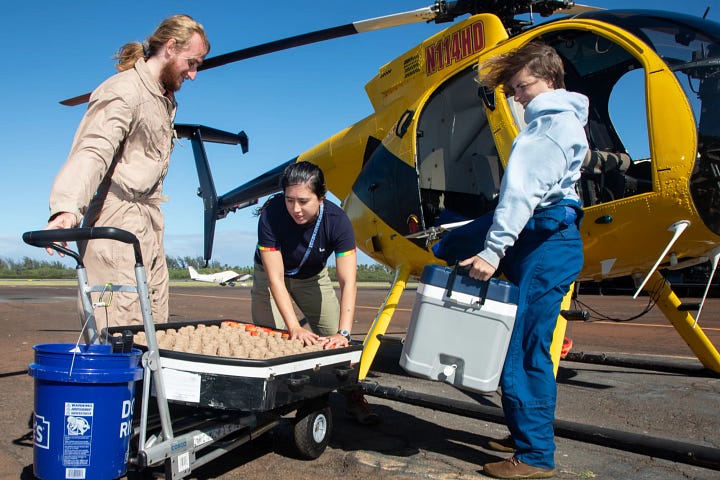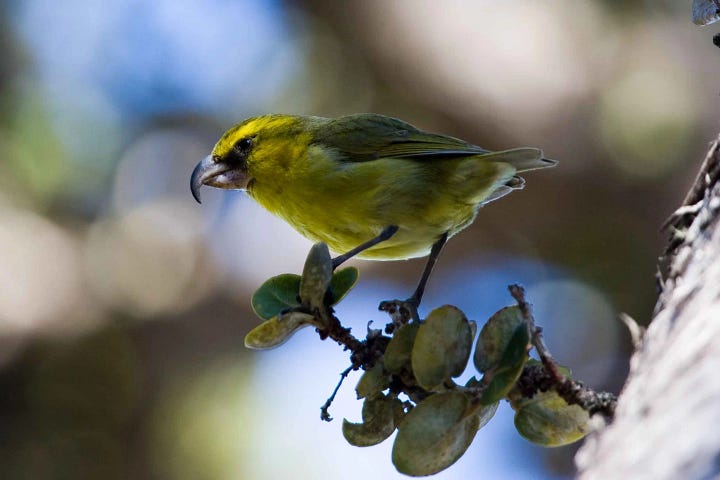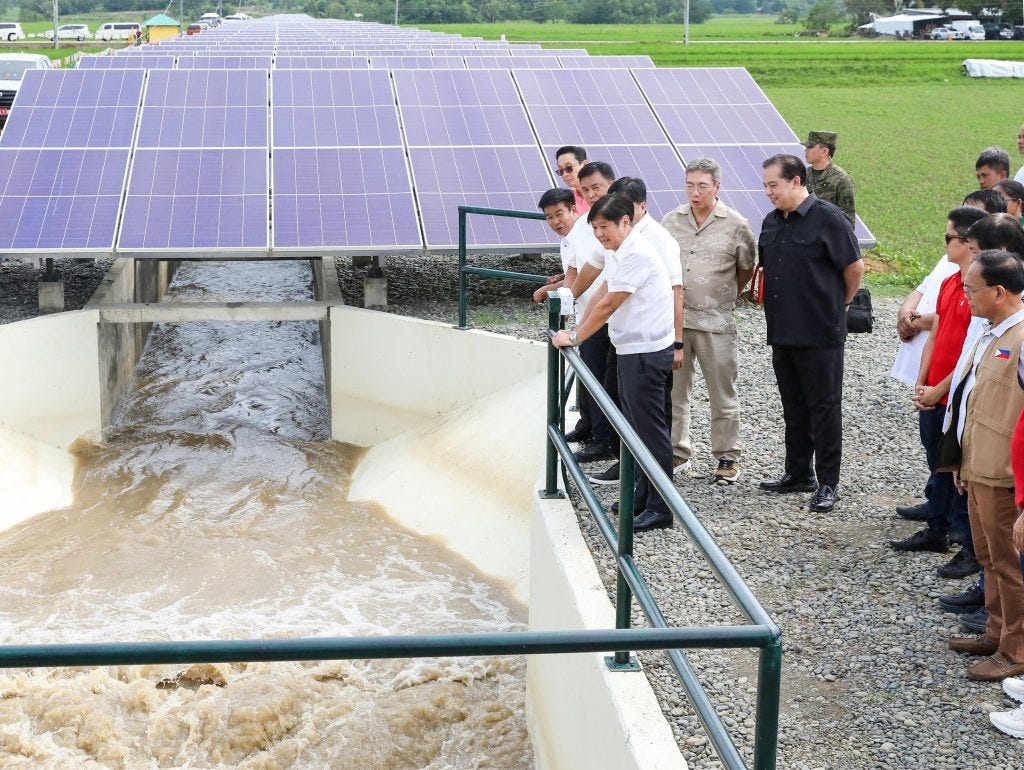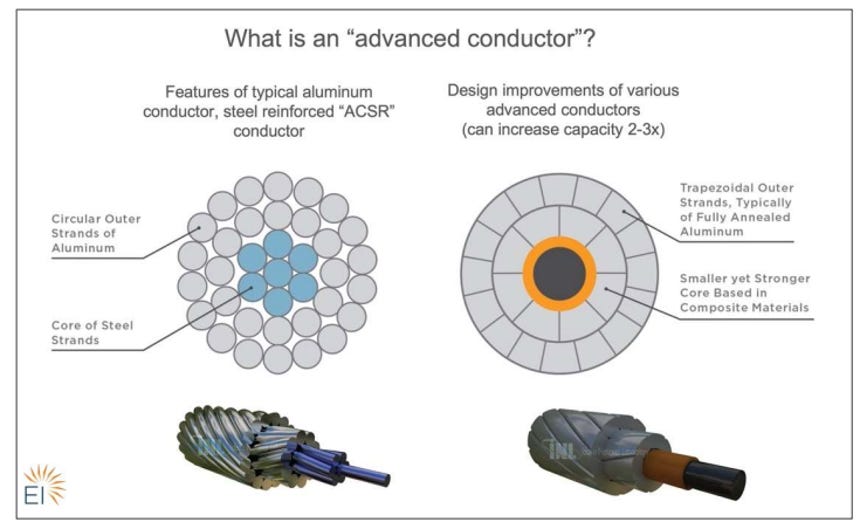The Weekly Anthropocene, June 19 2024
Clean energy investment keeps skyrocketing, Przewalski's horses in Kazakhstan, EVs in Morocco, wolves and white bison in Yellowstone, fighting mosquitoes with gene drives and Wolbachia, and more!
The Big Picture
The International Energy Agency’s World Energy Investment 2024 report just came out, and it’s yet another milestone in the stunning acceleration of the global renewables revolution. The headline stat is that global investment in clean energy is now nearly double the total global investment in fossil fuels. Out of over $3 trillion (i.e. 3,000 billion) in total global energy investment, around $2 trillion is going to clean technologies compared to just over $1 trillion for fossil fuels. This is AMAZING!
“For every dollar going to fossil fuels today, almost two dollars are invested in clean energy.”
-IEA Executive Director Fatih Birol.
Kazakhstan
Fresh from the triumphal rebound of saiga antelope populations, Kazakhstan has started the reintroduction of another classic steppe herbivore! On June 4th and 6th, seven Przewalski’s horses (Equus ferus przewalskii), three from the Prague zoo and four from the Berlin zoo, were flown into Arkalyk, Kazakhstan. Next, they’ll go from acclimatization enclosures to the open steppe of the nearby network of nature reserves, with a total of 40 Przewalski’s horses set to arrive over the next five years.
From a population nadir of just 12 individuals (all living in captivity) in the 1950s, there are now over 2,000 Przewalski’s horses alive today, living in zoos, Mongolia, Ukraine, France, Spain, Hungary, and now Kazakhstan! Great work!
Djibouti

The small East African nation of Djibouti seemed on the verge of eradicating malaria twelve years ago, but progress was reversed by the arrival of insecticide-resistant “urban mosquito” species Anopheles stephensi. Malaria cases grew exponentially from 30 in 2012 to 73,000 in 2020. But now, another turnaround is in the works; in May 2024, the first batch of tens of thousands of gene-edited male A. stephensi mosquitoes made by biotech pioneer Oxitec were released in Djibouti. The males are non-biting, and carry a “self-limiting” gene that prevents their female offspring from surviving to adulthood. When they breed with the local female mosquitoes, only their male kids will survive - and so on and so forth, a cycle escalating until there are only male A. stephensi mosquitoes left, and then none. This “gene drive” approach is currently being tested for many mosquito species around the world, and has extraordinary potential to prevent mosquito-borne illnesses - and unlike pesticides, it doesn’t kill any wildlife along the way, not even the mosquitoes themselves! Great work.
Philippines
Filipino President “Bongbong” Marcos recently inaugurated the Philippines’ largest-ever solar-powered irrigation system, with over 1,000 solar panels pumping water to 350 hectares of rice paddies. This system is also the first to be built atop an irrigation canal to minimize both water loss and land use, and will soon be joined by 152 additional solar irrigation systems currently under construction across the Philippines. Solar-powered irrigation brings a wide range of benefits (including reducing dependence on expensive imported fuel) and seems to be catching across Asia; Bangladesh is already experimenting with solar irrigation pumps as well.
Morocco
Up-and-coming Morocco is becoming a center of electric vehicle manufacturing as well as large-scale solar farms and phosphate fertilizer. The kingdom’s fast-growing auto industry, which now can produce 700,000 vehicles per year and accounts for 22% of national GDP, mostly exports cars to nearby Europe, with Renaults, Peugeots, Opels, Fiats, Clios and Dacia Sanderos among the marques made in Morocco today. The existing network of car factories in Morocco is expanding and increasingly investing in EV and battery technologies: at least two large new Chinese battery manufacturing factories are in the works, while Renault is converting its Tangier factory to make hybrids at a capacity of 120,000 per year. Moroccan Trade Minister Ryad Mezzour recently said that the country plans for EVs to make up 60% of all cars exported from Morocco by 2030, ahead of the EU’s planned phase-out of new internal combustion engine sales in 2035. Great work!
United States
New technology is opening up an exciting possibility for the American grid. What if, in addition to building more power lines to allow more electricity on the grid, we could simply make existing power lines carry more electricity per wire? A landmark new study calculates that “reconductoring” U.S. power lines by replacing standard steel wires with next-generation composite carbon fiber wires could provide up to 80% of the backlog-clearing new transmission we need, for half the price of building new power lines and without needing to acquire new right-of-way!
“We actually need stuff that can cook right now, right away…And the way to do that is by deploying grid-enhancing technologies, by reconductoring the lines that we have already strung up or buried across the country.”
-Ali Zaidi, White House National Climate Adviser
The Biden Administration is already working to make this idea possible, with a new Federal Energy Regulatory Commission (FERC) rule released in May 2024. Among other key points, the new rule allows the replacement of power line sections longer than 20 miles to proceed without a lengthy (and easily hijack-able by fossil fuel interests) NEPA environmental review process, and explicitly requires transmission line operators to consider using awesome new technologies like reconductoring.
Furthermore, 21 U.S. Climate Alliance states are already talking with the federal government about grid advances, and a few like Illinois, Virginia, and Minnesota are already working to establish new laws and regulations to push utilities to try reconductoring. Watch this space!
After years of delays, Bill Gates-funded startup TerraPower has begun construction on its long-heralded 345 MW “Natrium” sodium-cooled nuclear reactor in Kemmerer, Wyoming. This project also integrates a molten salt-based energy storage system that allows easy integration with renewables on the grid, and is the first-ever “next-generation” small modular reactor designs to actually be built in the United States. This newsletter suspects that such next-gen nuclear reactors will play a relatively small role in the global clean energy transition due to renewables and batteries’ modularity and cost advantages, but it’s great that we’re innovating in this space too: more clean electrons becoming available is great news!
Wolf 907F, the one-eyed alpha female of the large Junction Butte pack in Yellowstone National Park, was already known as an exceptional survivor: at age 11, she’s extremely old for a wild wolf. (About one out of every 300 wild wolves makes it to that age). Now, she’s shocked researchers by becoming the first wolf ever recorded in Yellowstone to give birth to her 10th litter of pups, with three arriving in May 2024.
In further Yellowstone news, an extremely rare white buffalo calf has reportedly been born to the park’s wild bison herd1, causing great excitement among local Lakota and other Native American nations who view it as the fulfillment of an ancient prophecy.


The colorful and diverse Hawaiian honeycreeper birds have been devastated by avian malaria carried by mosquitoes accidentally brought to the islands in the 1800s, with only 17 of an estimated 50 species in the bird family having escaped extinction. Some species survived on mountaintops too cold for mosquitoes, but accelerating climate change imperils these last refuges.
Now, a boldly proactive conservation project is working to give them a chance. In addition to ongoing mosquito net-shielded captive-breeding work for many Hawaiian honeycreeper species, conservationists have dropped 10 million male mosquitoes onto Maui’s mountaintops in recent years, in a recently developed anti-mosquito method similar to yet distinct from Oxitec’s gene drives. These male mosquitoes have been inoculated with Wolbachia bacteria, which alters their reproductive cells to make them unable to reproduce with local females who carry a different Wolbachia strain, hopefully soon cratering the total population.
Climate change has been widely forecasted to bring boom times for mosquitoes with grave consequences for humans and animals, but those justifiable fears didn’t take into account the ever-expanding horizon of human ingenuity! Spectacular work.
For some reason, the consensus terminology seems to be “bison” for the species Bison bison, aka the American buffalo, but “white buffalo” for white bison in a Native American religious context.











nice positive news . Thanks Sam .. Those Mosquito scientists ROCK !!
Very enjoyable and encouraging reading. Mosquitoes, reconducyoring, Wyoming, Djibouti, Morocco.. and especially Kazakhstan and those horses!!